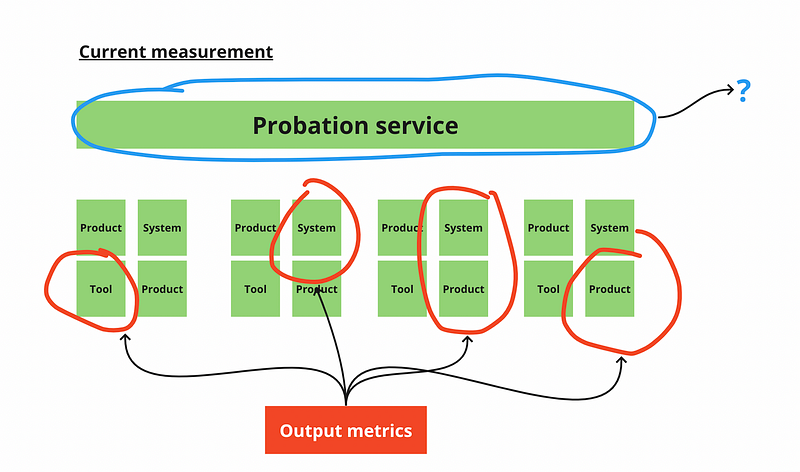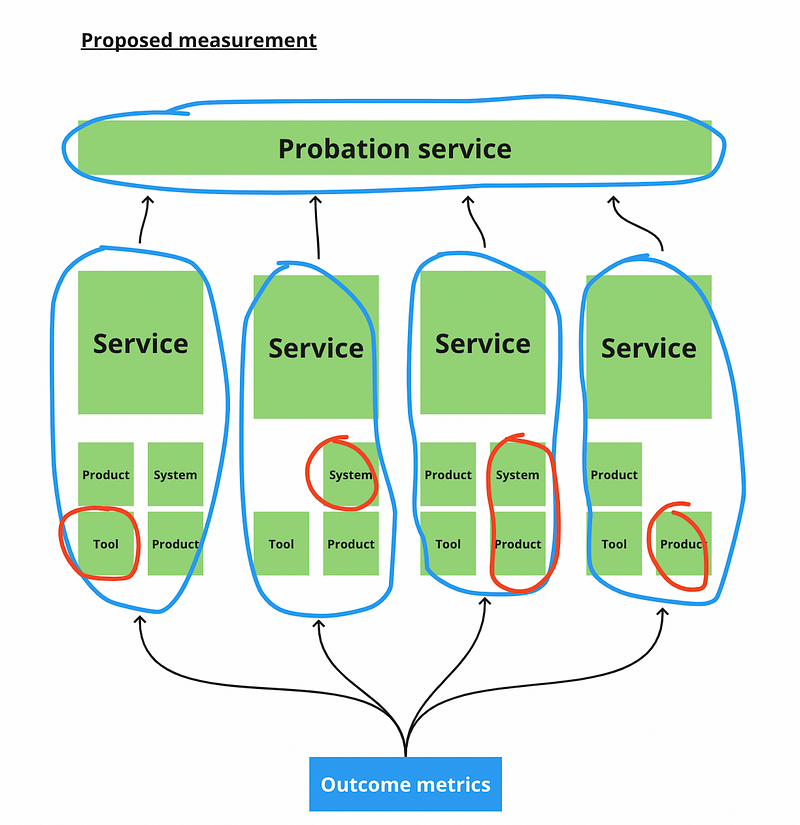Measuring Probation Digital Services
As a senior service designer supporting the leadership team across Probation Digital Services in England and Wales, I was responsible for developing and implementing a measurement framework that would provide a comparable, holistic view of the whole program's performance.

SITUATION
The Probation Service lacked a consistent approach to measurement resulting in limited visibility into whether they were working on the right things. The current measurement approach was focused on product-level metrics which led to business-driven roadmaps without the evidence to change course, measuring outputs rather than outcomes. There were pockets of measurement, but they were inconsistent, siloed and reactive, making it hard to see gaps and plan. The probation measurement framework was designed to address these issues.

TASK
The goal was to develop and implement a measurement framework that would provide a comparable, holistic view of the whole program's performance; allowing the identification of strengths, weaknesses, and gaps. The framework would group products, tools, and systems into services with defined outcomes, ensuring consistency and alignment to the probation service. The framework would be based on three categories: simpler, faster, and better which aligned with the probation digital goals from the next 3–5 years.
ACTION
I identified two hypotheses to test, the first of which was to group products, tools, and systems into services with defined outcomes. The second hypothesis was to introduce a consistent measurement framework that aligned with strategic goals and was flexible enough to allow product teams to provide metrics.


The framework is based on Google's HEART framework, which allowed us to link product metrics with strategic goals through the use of 'signals'. The framework is based on three categories "simpler, faster, and better" which aligned it with probation's digital goals from the next 3–5 years. The idea being that teams would be able to find metrics that align to the signals which align to strategic goals.
RESULT
The proposed framework would provide more consistent measurement across the program, improved visibility and understanding of the program's overall performance and progress towards strategic goals, increased ability to identify strengths, weaknesses, and gaps in delivery, greater alignment between product strategy and the organisation's vision, increased ability to make data-driven decisions, and better conversations with stakeholders and operations.
The next steps would be to identify and engage with stakeholders at all levels, work with individual teams to create a process for collecting and data, including tools and methods - testing hypotheses, and overcome challenges around skills, resources, and time to support the rollout. The conclusion was that the current approach to value measurement was fragmented, with product-level measurements and inconsistent measurement across probation. The proposed measurement framework was aligned to Probation Digital strategy, which aligns with the probation vision. The team was looking for areas to test their hypotheses and, once happy with the approach, would develop plans for a full rollout, ensuring it was sustainable with the right skill sets supporting it..
CONTACT
Email me, follow me on twitter or lets do business on LinkedIn.